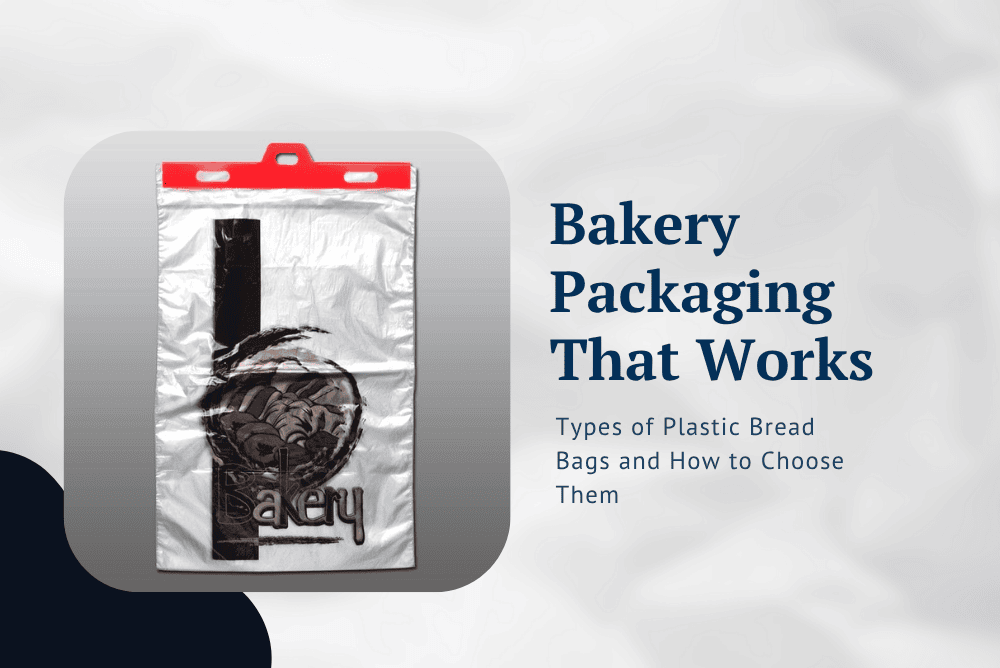
Presentation, protection, and preservation of baked items, such as bread and pastries, are essential for bakers. While the bread may be baked to perfection using the quality ingredients, its journey from oven to customer’s hands would depend on one critical factor – packaging. This is where bread bakery bags can make a difference. They keep your bread fresh, prevent contamination, enhance shelf appeal, and serve as a silent yet powerful branding tool. Whether you are a small artisan bakery or a large-scale commercial producer, choosing the right packaging, like FDA-approved plastic bread bags, can elevate your product and improve customer satisfaction. This post introduces you to different types of bread bakery bags and offers tips for their selection.
Types of Bread Bakery Bags
When it comes to packaging bakery products, one size certainly doesn’t fit all. From artisan loaves to sandwich bread, each product has unique packaging needs based on its shape, size, and shelf life. That’s why it’s important to choose from a variety of plastic bread bakery bags that are designed to preserve freshness, enhance presentation, and meet food safety standards. Below are some of the most commonly used and effective options available for packaging bread and other baked goods.- Header Pack Bread Bags: These plastic bread bakery bags feature pre-packed headers that enable quick dispensing. They are suited for high-speed packaging environments, such as delis and commercial bakeries.
- Flip-Top Saddle Pack Deli Bags: These bread bakery bags are used for packaging sandwiches, bagels, subs, and so on. They meet FDA and USDA specifications, and are designed to streamline high-volume food packaging. Flip-top saddle pack deli bags feature flip top closure for fast and easy closure and are heat sealable.
- Flat Bread Bags: These bags are designed for packaging sliced bread rolls, rolls, and small loaves. They are cost-effective and ideal for high-volume use in bakeries and grocery stores.
- High-density Polyethylene (HDPE) Bags: Generally offered in 0.6mil and 1 mil thickness, these bread bakery bags ensure excellent moisture resistance and durability during transport. They are FDA-resistant and possess a slippery inner surface for easy loading.
- Gusseted Bread Bags: These plastic packaging bags are ideal for packaging bulkier items like whole loaves, artisan breads, and baguettes. They feature expandable sides for extra room, which allows for better fit, and helps maintain the shape of the product. Gusseted bread bags are also ideal for display.
- Custom Printed Bread Bags: As the name suggests, these bags can be a combination of all the above bags, which are used for branding and customer engagement. These bags can feature logos, marketing messages, QR codes, or seasonal graphics. They help enhance shelf appeal.
Factors to Consider When Choosing Plastic Bakery Bags
Here are some important aspects to consider when choosing the right plastic packaging bags for your bakery products.- Size and Thickness: You can choose small, medium, or long sizes, depending on the quantity to be put inside. FDA approves thickness of 0.6 Mil and 1.0 Mil for plastic packaging. The size must be such that the products stay in the bag without moving, especially in transit to prevent damage. Very tight or small bags may ruin the shape of that product. Hence, getting the right size is crucial to accommodate the food items comfortably. Also, check if you need gusseted or flat bags. For instance, gusseted bags are useful for packing a loaf of bread or cake, while flat ones may be good enough for muffins.
- Product Type and Shelf Life: If you want the bags for bread, ensure they have enough space at the open end that is sealed. This makes the bag breathable and ensures the bread remains fresh as per the date mentioned for about four to five days from packaging.
- Material: HDPE as a material is durable, especially during transit. FDA-approved food grade plastic is moisture resistant, and hence prevents the bread from soaking moisture and perishing. Ensure the material is transparent, lightweight, breathable, and customizable. Customizing goes a long way in keeping the product fresh for the longest period. Also, consider sustainable options that are either recyclable or reusable.
- Customization & Branding: Printed logos and content must be bold and attractive to serve as branding tool. While getting the right size and fitment is necessary, printing your brand’s information is an important aspect of customization. It helps advertise your product and reach out to hundreds of people at a time. One can also consider limited quantities of customized bags for special offers or events, which is also an effective branding tool.
- Regulatory Compliance and Food Safety: Food packaging bags must be USDA- and FDA-approved and meet any applicable local food contact regulations.
- Choosing the Right Supplier: Partner with the right plastic bread bags suppliers that understand your specific requirements and offer custom options. Buying wholesale bakery bags is certainly beneficial from a business perspective to achieve cost efficiency. It also helps ensures your packaging inventory is as required. Ensure the supplier offers the best prices on bulk orders.
